- Home
- Jules Verne
Twenty Thousand Leagues Under the Sea (Barnes & Noble Classics Series) Page 3
Twenty Thousand Leagues Under the Sea (Barnes & Noble Classics Series) Read online
Page 3
In the preface to the first issue of his new magazine, Hetzel wrote, “We are attempting to create a journal for the entire family that is educational in the true sense of the word; one that is both serious and entertaining, one that would be of interest to parents and of profit to children. Education and recreation—these two terms, in our opinion, should complement each other.... Our ambition is to supplement the necessarily arduous lessons of the classroom with a lesson that is both more personal and more trenchant, to round out public education with family readings ... to fulfill the learning needs of the home, from the cradle to old age” (Evans, p. 24).
Hetzel’s magazine was not the first to discover this niche market. In addition to Musée des familles, started in 1833, there was the Journal of Education in 1768, the Magazine of Pictures in 1833, and World Tour in 1860, the last a version of the modern-day National Geographic. But if Hetzel’s magazine wasn’t the only one of its kind, it was the best. With the most illustrations, with stories by the famous Verne, and with good binding and high-quality paper, Hetzel’s magazine appealed to every generation of French readers with a taste for both adventure and science.
There were, however, downsides to the deal. Hetzel, exploiting Verne’s hunger for fame, negotiated a deal in which Verne made the equivalent of $2 million throughout his relationship with the publisher and Hetzel made three times that much. In addition, Hetzel required Verne to work at breakneck speed. In the eleven years between publication of Five Weeks in a Balloon and The Mysterious Island, Verne wrote ten complete novels as well as a series of travel books dealing with the natural history of each region of France.
But the most disturbing aspect of this writer-publisher relationship was hinted at in Hetzel’s own mission statement. “We have created a Magazine wherein everything is tailored to different age groups and nothing displeasing to anyone,” Hetzel wrote (Evans, p. 24). The articles and stories in this magazine were to be “fundamentally wholesome and good” (Evans, p. 24), and Hetzel worked closely with Verne to ensure that his stories met these criteria. It was a recipe for censorship. Hetzel struck many of Verne’s references to God, as well as any mention of sex or sensuality. For instance, in the original manuscript of Twenty Thousand Leagues Under the Sea, the paintings in Captain Nemo’s library included a “half-clothed woman” (Evans, p. 29) and a courtesan. These were changed to a Leonardo da Vinci virgin and a portrait by Titian, respectively.
At other times Hetzel attacked his star author. “Where’s the science?” Hetzel wrote when Verne presented him with a manuscript of what would become The Mysterious Island. “They [the characters] are too dumb! ... 82 pages of text and not a single invention that a cretin couldn’t figure out! ... It’s a collection of totally listless beings; not a one of them is alert, lively, witty.... Drop all these guys and start again, from scratch” (Evans, p. 27).
Verne, eager to keep his name at the top of Hetzel’s literary roster, compromised himself to please his editor. After Hetzel presented Verne with a laundry list of edits on his manuscript of The Adventures of Captain Hatteras, Verne responded in a letter, “I promise you that I will take them into account, for all your observations are correct.... I have not yet achieved total mastery over myself.... Have you ever found me to be recalcitrant when it came to making cuts or rearrangements? Didn’t I follow your advice in Five Weeks in a Balloon by eliminating Joe’s long narrative, and without pain?” (Evans, p. 27).
These influences—Hetzel’s pedantic morality along with the proven formula of Verne’s previous successes—gave rise to the Jules Verne Novel, a mold from which most of his works were cast. In later years especially, his formula sometimes became wooden; his plots hung like cloaks on the frames of his familiar characters. Whether a tale of adventures under the sea, scientific discoveries circling the moon, or a race against time around the earth, nearly all of Verne’s novels track the adventures of a scientist-turned-hero, from Phileas Fogg to Professor Aronnax. The scientist-hero is aided by a worthy servant, and this pair is complemented by a “common man,” a figure like Ned Land in Twenty Thousand Leagues Under the Sea. There is usually a library or a museum somewhere in the story—as in Nemo’s paintings, books, and display shelves—as well as an obsessive desire to take bearings and locations, as in Aronnax’s consultation of the naval charts for longitude and latitude or a group of people clambering up a mountain in The Mysterious Island to read the land. In addition, Verne’s adventures nearly always take place in microcosmic societies: on a ship, in a balloon, in a submarine, on a space projectile, on an island, on the ice. The scientist-hero always returns to his departure point—for Aronnax in Twenty Thousand Leagues Under the Sea it is to dry land—to publish the discoveries made during the course of his trip. This recurring structure provided Verne a ready-made narrative arc that proved useful. Not only did it excuse the sometimes endless categorizing of scientific knowledge—“ I end here this catalogue, which is somewhat dry, perhaps, but very exact, with a series of bony fish that I observed,” Aronnax writes (p. 260)—it also lent credence to the claims made in the course of the tale. By couching his findings in a book that serves the greater good of science, it is as if the fictional Professor Aronnax says, “It really did happen. We really did see an army of gigantic squid.” Verne’s novels are fiction presented as fact, and fact presented in fiction. The structure, formulaic as it was, served its author well.
Verne did sometimes complain of “the narrow confines that I’m condemned to move around in” (quoted in Evans, p. 26), although never very vocally. The major battle between Verne and Hetzel took place over the figure of Captain Nemo in Twenty Thousand Leagues Under the Sea. Verne conceived Nemo as a political fugitive, a rebel hiding from the world by diving in the Nautilus under the sea. He intended Nemo to be a Polish freedom fighter who, after rebelling against the czar of Russia, disappears into the deep. All the clues are there: Nemo’s portrait gallery of notable revolutionaries, his exclamation “The earth does not want new continents, but new men” (p. 100), his support of the Greek freedom fighters. But Hetzel did not want Nemo to be a Pole rebelling against Russia. At the time Twenty Thousand Leagues Under the Sea was in galleys, France had freshly signed a treaty with Russia. Hetzel, once a political refugee himself, thought Nemo’s motivation would anger Napoleon. Not willing to take the risk, he ordered Verne to change Nemo’s background to something more palatable to the Emperor.
Verne refused. “If Nemo had been a Pole whose wife died under the knout and the children perished in Siberia, and this Pole found himself confronted by a Russian ship with the possibility of destroying it, everyone would admit his right to vengeance,” Verne wrote to Hetzel. “[Nemo] is a generous person.... You understand that if I were creating this character again—which I am totally unable to do because I’ve been living with him for two years, I would not be able to see him any other way.... If I can’t be allowed to explain the reasons for his hatred ... I’ll remain silent about the causes or about his entire life, his nationality, etc.” (quoted in Lottman, p. 139). In the end, Verne struck Nemo’s history from the record, leaving clues about his fight against the oppressor and for the freedom of the oppressed without explaining the cause.
Far from “generous,” the new Nemo’s vengeful motivations are left obscure; instead of being justified in striking out, he seems to gain pleasure in killing for killing’s sake. Though less politically sensitive—Hetzel got what he wanted—Nemo became far more troubling: “That terrible avenger, a perfect archangel of hatred,” as Verne describes him (p. 289). The new Nemo holds free men against their will without explanation; he is freedom fighter turned taker of freedom, oppressed turned oppressor.
But he is also a king of the seas, wealthy beyond human dreams, capable of saving a family of whales from slaughter. Nemo plants a sinister black flag etched with the letter “N” as if to claim the ice, but he also cries over his lost companion and plays classical music in the dark. Verne’s rebellion against Hetzel gave birth to this si
ngular character: complicated, unexplained, and at last unknowable, a true genius and an enigma to the very end.
In a later book—The Mysterious Island, published in 1874—Verne had the opportunity to set the record straight. Verne’s cast of shipwrecked inventors discover Nemo in an ocean cave, the last surviving crew member of the Nautilus. Nemo tells his history: He is the Indian Prince Dakkar of Bundelkhand and a fighter in the 1857 Sepoy Rebellion against the British imperialists. The war claimed the lives of his wife and children. In response, Nemo took refuge in the sea, destroying British ships with “the right of vengeance.” At last, it seems, Nemo’s actions were justified by their cause.
From the publication of his first novel until the year of his death, Verne wrote one or two books a year, thus keeping himself at the top of the literary shortlist. He became a rich man who bought both a mansion in the provinces and a 38-ton yacht requiring a crew of ten. Although he achieved the fame and fortune he had set his sights on as a young man in Paris, the end of his life was bleak. In a series of stressful years, Verne was shot in the leg by a deranged relative; his presumed mistress died; his longtime friend and publisher, Hetzel, died; and his mother died. “I have entered into the darkest part of my life,” he wrote in a letter. “All that’s left for me ... are these intellectual distractions.... My character is profoundly changed, and I have received blows from which I will never recover.... I am rarely [happy] any more.... All told, I’m finishing up badly” (quoted in Evans, p. 81).
As an elderly man, Verne began to lose both his sight and his hearing, and he remained troubled by a delicate nervous and gastronomic system. In March 1905 the right side of his body became paralyzed. He was moved to an inside room within his mansion and prescribed absolute silence. On March 23 Verne’s left side became paralyzed. He lapsed into a coma and died on the morning of March 24, 1905. He was seventy-seven years old.
“There can never be another Jules Verne,” wrote Arthur C. Clarke, author of 2001: A Space Odyssey and a dedicated reader of Verne, “for he was born at a unique moment in time” (quoted in Teeters, p. 112). Verne was present at the birth of phosphorus matches, detachable collars, double cuffs, letterheads, and postage stamps. He saw the introduction of Loire river steamboats, railroads, trams, electricity, the telegraph, the telephone, and the phonograph. He was born into the age of Alexander Graham Bell, the Industrial Revolution, Karl Marx, Darwin, the colonization of Africa, and wars of independence around the world. In his lifetime the Suez Canal opened, the Hyatt brothers invented celluloid film, an electric generator was built in the Alps, the electromagnetic theory of light was proven, and scientists for the first time ordered elements by the number of their electrons, which paved the way for the modern periodic table.
Science was, for Verne, humankind’s greatest hope. At his best, he approached science with awe and naivete, making grandiose statements like, “When Science speaks, it behooves one to remain silent” (quoted in Evans, p. 48). Unlike many of his contemporaries, he did not consider the unknown aspects of the natural world beyond human understanding. “Let’s reason this out,” he wrote in The Mysterious Island (Evans, p. 52), displaying his faith in science as the great, organizing force. Verne was an optimist; he believed in the ability of the human mind to perceive and to eventually gain mastery over earth’s untamable mysteries through the discoveries of science.
His books accurately predicted many modern-day inventions, including the fax machine, the automobile, pollution, and even chain bookstores. In Twenty Thousand Leagues Under the Sea, he predicted batteries, searchlights, and the tasers used by America’s police force. He foresaw the importance of electricity as a source of energy and suggested methods for air travel that later helped the first pilots get their feet off the ground. He anticipated the discovery of Darwin’s “missing link” between humans and apes. He even provided the technical details of the first manned trip to the moon. When the Apollo 8 mission returned from its voyage, one of the astronauts wrote Verne’s great-grandson a letter that praised the author’s predictive abilities in From the Earth to the Moon: “Our space vehicle was launched from Florida, like Barbican’s; it had the same weight and the same height, and it splashed down in the Pacific a mere two and a half miles from the point mentioned in the novel” (quoted in Teeters, p. 62).
In the more than 150 years since Verne’s first novel came off the press, seven generations of scientists and explorers have read his books. “It is Jules Verne who guides me,” wrote Antarctic explorer Richard E. Byrd (Teeters, p. 50). Jean Cocteau re-created Phileas Fogg’s round-the-world journey, completing his itinerary in eighty-two days. Walt Disney was a Verne reader. So was Robert Goddard, the American physicist known as the father of rocketry, who stated in 1919 that humans would one day put a man on the moon. Auguste Piccard, the Swiss physicist who in 1932 ascended 55,500 feet into the stratosphere in a balloon, and his son Jacques, who in 1960 descended to the deepest depression in the Pacific Ocean in a diving bell, read Verne. “Everybody read Jules Verne and felt that tremendous power to dream, which was part of his erudite and naïve genius,” wrote the author Ray Bradbury. “I consider myself as the illegitimate son of Jules Verne. We are very closely related” (quoted in Lynch, p. 113).
Though the accolades come in waves—and millions of readers worldwide have dreamed, traveled, and soared alongside Verne’s pen—it would be a mistake to close the book on Verne so quickly. Verne was more than a talented writer, a crafter of adventure plots, and a master of the scientific imagination. Like his noble and tragic Nemo, Verne cannot be defined so easily.
After his death, Verne willed a half-ton bronze safe to his son. The safe stayed in the family from generation to generation, until his great-grandson, Jean Verne, discovered it in a dusty corner of a storage shed. In all that time, the safe had never been opened. When Jean Verne opened it, he discovered one of Verne’s lost manuscripts. Paris in the Twentieth Century was published for the first time in 1994; it sold 100,000 copies and rose to the top of the French best-seller list.
True to style, the last of Verne’s published books accurately forecast twentieth-century life. But instead of Verne’s characteristic optimism—“ All that’s within the limits of the possible must and will be accomplished” (quoted in Evans, p. 48)—Paris au XXe siècle (Paris in the Twentieth Century) presents the future as tragic instead of hopeful, and science as the great destroyer instead of the great hope. In the book, Verne’s hero—this time a poet, not a scientist—wanders the streets of Paris looking for a publisher. But the citizens of Paris have forgotten the humanities and turned instead to the sterile comforts of life lived through science. Jobless and homeless, Verne’s hero walks the perfect streets of the city destitute and alone. He spends his last penny buying a flower for his beloved, but when he delivers it he finds the house empty, the family gone. The book concludes with the hero lost in a winter graveyard amid tombs of forgotten novelists before he collapses and dies on the frozen, snowy ground.
What to make of this novel, of the dystopia it presents? In the context of Verne’s other works, in which science unites more than it divides, how should we understand the message of this book? For the forty years of his writing life, Verne fed his readers a consistent diet of fancy based on fact, an optimism rooted in a solid belief in the positive potential of the human mind. But during those forty years, he discovered a truth more troubling: Humans might not be saved by science. We might destroy ourselves rather than thrive because of it. For modern readers, who live in a world shaped by Hiroshima and September 11, Verne’s pessimism seems well placed. Just as in Verne’s time science was used as a political and religious tool, so it is now used. Underneath the general optimism of Verne’s novels lies a kernel of pessimistic truth: Science can do nothing but amplify the natural attributes of humankind, including hatred, violence, and vengeance.
It is interesting to note that even while Hetzel edited Verne to ensure the moral “wholesomeness” of his writing, he failed to strike
the most violent and bloody scenes from Verne’s manuscripts. To the modern reader, some of these passages seem to be drawn more from a horror movie than an educational magazine. One of these takes place at the end of Twenty Thousand Leagues Under the Sea with the sinking of the British ship. “A large mass cast a shadow on the water,” Verne writes, “and that it might lose nothing of her agony, the Nautilus was going down into the abyss with her.... Her topmast, laden with victims, now appeared; then her spars, bending under the weight of men; and last of all, the top of her mainmast. Then the dark mass disappeared, and with it the dead crew, drawn down by the strong eddy” (pp. 288-289). Another can be read in Verne’s The Children of Captain Grant: “Sudden knife thrusts by six robust warriors, and the victims dropped to the ground amid a widening pool of blood,” Verne wrote. “A horrible scene of cannibalism followed ... a large mass of natives ... went into a bestial frenzy and pounced on the lifeless remains of the victims. In less time than it takes to describe it, these bodies, though still warm, were torn apart, chopped up and reduced to bits and pieces.... [The cannibals] fought over it, struggled, and argued over the smallest morsel. Warm drops of blood splattered over this repulsive horde, producing a red mist within which they swarmed” (quoted in Evans, p. 43).
Is this Verne? The same Verne whose books have been read with flashlights under tented sheets by seven generations of children? The Verne who wrote “there is logic to everything here on earth” (Evans, p. 52)? The Verne who thought that scientific discovery would allow man to “reign as master over [the earth], and bring out its very best” (Evans, p. 48)?
Indeed it is. Verne may have been among the first to write fantasy based on fact, but more importantly he was also the first to recognize the romance and lyricism inherent in science. He saw with clear eyes the way in which science and the pursuit of the unknown underscores fundamental qualities of the human condition: love, hate, envy, ambition, and the dangers of unchecked curiosity. Like the Greek hero Menelaus traveling across the Aegean for bloodshed, so too Nemo in his Nautilus. Verne’s scientist-heroes don’t always come home safely. After reaching their goal, some of them go insane.

 Michael Strogoff; Or the Courier of the Czar: A Literary Classic
Michael Strogoff; Or the Courier of the Czar: A Literary Classic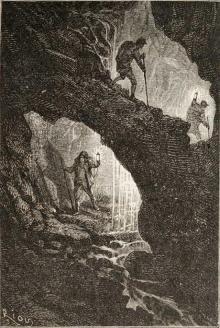 Voyage au centre de la terre. English
Voyage au centre de la terre. English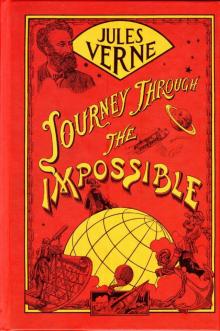 Journey Through the Impossible
Journey Through the Impossible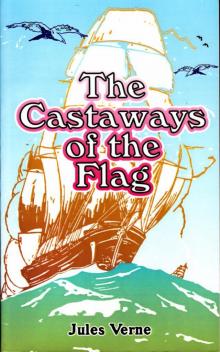 The Castaways of the Flag
The Castaways of the Flag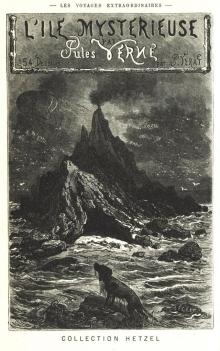 L'île mystérieuse. English
L'île mystérieuse. English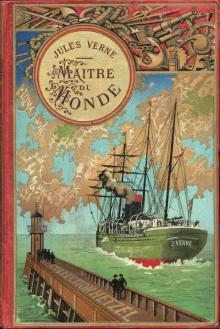 Maître du monde. English
Maître du monde. English Around the World in Eighty Days
Around the World in Eighty Days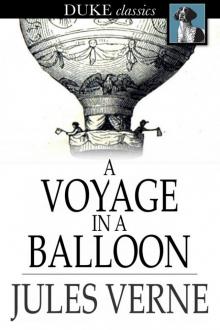 A Voyage in a Balloon
A Voyage in a Balloon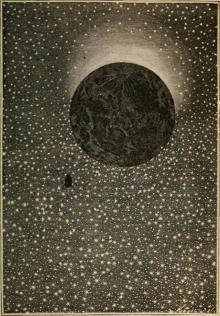 From the Earth to the Moon, Direct in Ninety-Seven Hours and Twenty Minutes: and a Trip Round It
From the Earth to the Moon, Direct in Ninety-Seven Hours and Twenty Minutes: and a Trip Round It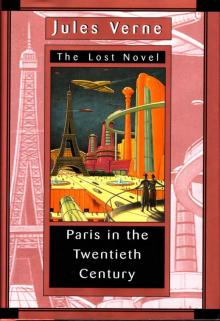 Paris in the Twentieth Century
Paris in the Twentieth Century City in the Sahara - Barsac Mission 02
City in the Sahara - Barsac Mission 02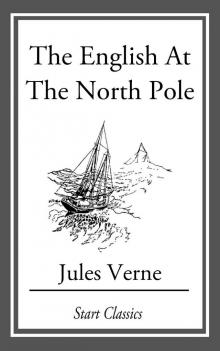 The English at the North Pole
The English at the North Pole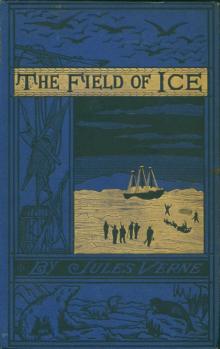 The Field of Ice
The Field of Ice From the Earth to the Moon
From the Earth to the Moon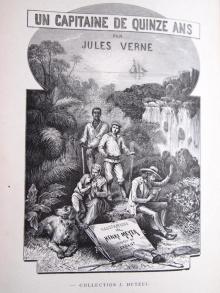 Un capitaine de quinze ans. English
Un capitaine de quinze ans. English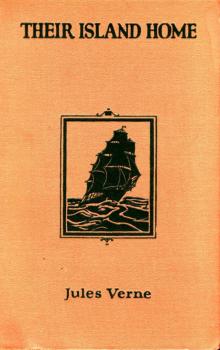 The Mysterious Island
The Mysterious Island Les indes-noirs. English
Les indes-noirs. English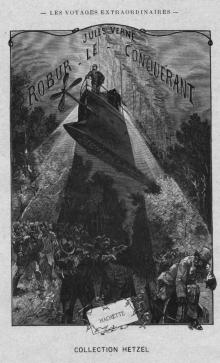 Robur-le-conquerant. English
Robur-le-conquerant. English Propeller Island
Propeller Island Around the World in Eighty Days. Junior Deluxe Edition
Around the World in Eighty Days. Junior Deluxe Edition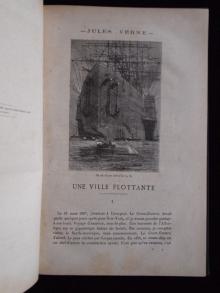 Les forceurs de blocus. English
Les forceurs de blocus. English In the Year 2889
In the Year 2889 Journey to the Centre of the Earth
Journey to the Centre of the Earth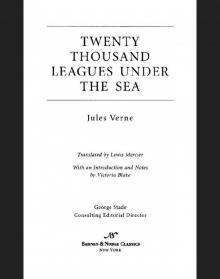 Twenty Thousand Leagues Under the Sea
Twenty Thousand Leagues Under the Sea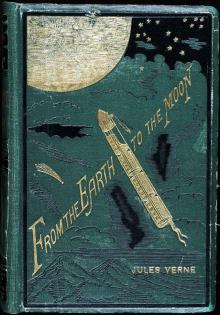 From the Earth to the Moon; and, Round the Moon
From the Earth to the Moon; and, Round the Moon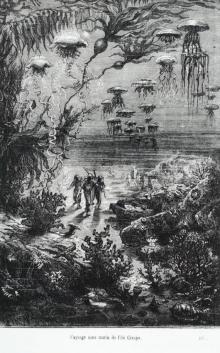 Vingt mille lieues sous les mers. English
Vingt mille lieues sous les mers. English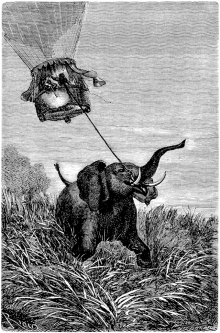 Cinq semaines en ballon. English
Cinq semaines en ballon. English Twenty Thousand Leagues under the Seas
Twenty Thousand Leagues under the Seas Face au drapeau. English
Face au drapeau. English Michael Strogoff; Or, The Courier of the Czar
Michael Strogoff; Or, The Courier of the Czar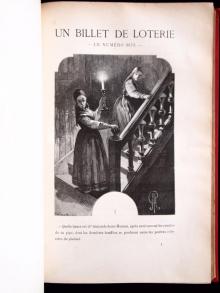 Un billet de loterie. English
Un billet de loterie. English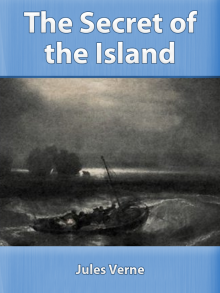 The Secret of the Island
The Secret of the Island Off on a Comet! a Journey through Planetary Space
Off on a Comet! a Journey through Planetary Space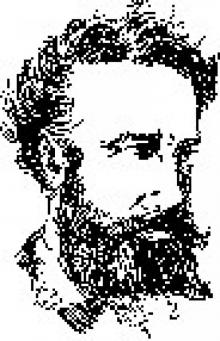 Into the Niger Bend: Barsac Mission, Part 1
Into the Niger Bend: Barsac Mission, Part 1 All Around the Moon
All Around the Moon A Journey to the Center of the Earth - Jules Verne: Annotated
A Journey to the Center of the Earth - Jules Verne: Annotated 20000 Lieues sous les mers Part 2
20000 Lieues sous les mers Part 2 Robur-le-Conquerant
Robur-le-Conquerant Les Index Noires
Les Index Noires Michael Strogoff; or the Courier of the Czar
Michael Strogoff; or the Courier of the Czar 20000 Lieues sous les mers Part 1
20000 Lieues sous les mers Part 1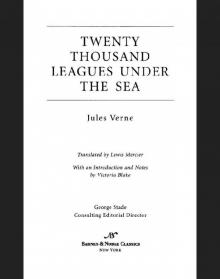 Twenty Thousand Leagues Under the Sea (Barnes & Noble Classics Series)
Twenty Thousand Leagues Under the Sea (Barnes & Noble Classics Series)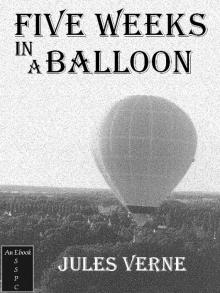 Five Weeks In A Balloon
Five Weeks In A Balloon Journey to the Center of the Earth
Journey to the Center of the Earth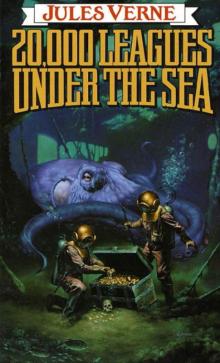 20,000 Leagues Under the Sea
20,000 Leagues Under the Sea Journey to the Center of the Earth (Barnes & Noble Classics Series)
Journey to the Center of the Earth (Barnes & Noble Classics Series)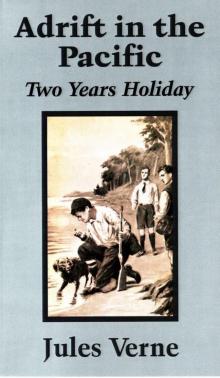 Adrift in the Pacific-Two Years Holiday
Adrift in the Pacific-Two Years Holiday The Collected Works of Jules Verne: 36 Novels and Short Stories (Unexpurgated Edition) (Halcyon Classics)
The Collected Works of Jules Verne: 36 Novels and Short Stories (Unexpurgated Edition) (Halcyon Classics) The Survivors of the Chancellor
The Survivors of the Chancellor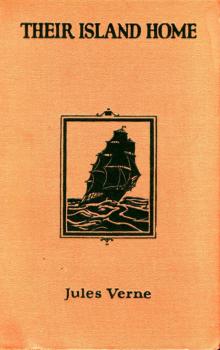 Their Island Home
Their Island Home Le Chateau des Carpathes
Le Chateau des Carpathes Les Cinq Cents Millions de la Begum
Les Cinq Cents Millions de la Begum The Floating Island
The Floating Island Cinq Semaines En Ballon
Cinq Semaines En Ballon Autour de la Lune
Autour de la Lune